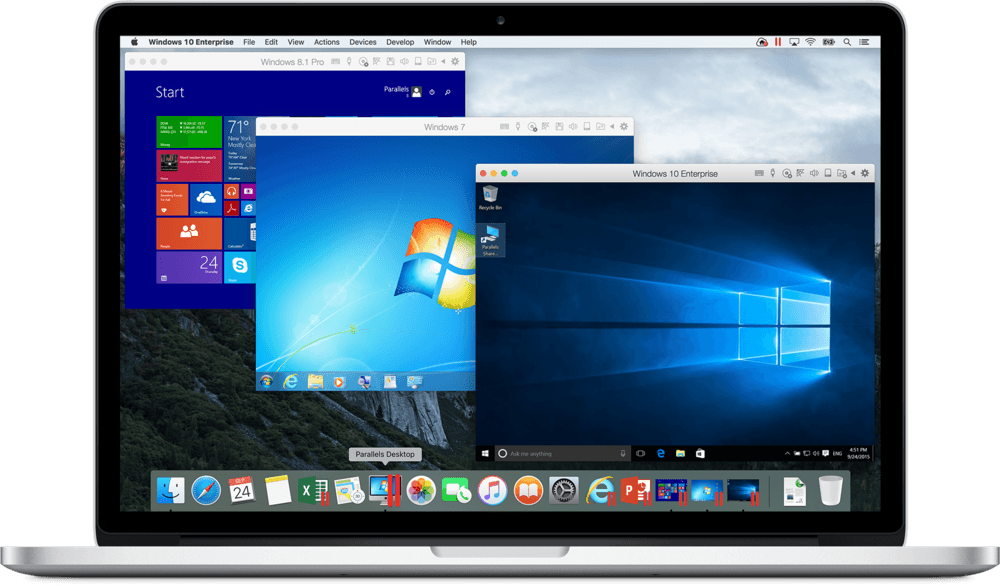


- #Parallel vs vmware for mac for free
- #Parallel vs vmware for mac for mac
- #Parallel vs vmware for mac mac os
- #Parallel vs vmware for mac install
#Parallel vs vmware for mac for mac
By far the two best virtual machines for Mac users are Parallels and VMWare Fusion. When configuring Windows with any of these options, it is important the configuration meets the minimum system requirements for installing ArcGIS. Installing Windows 10 or Windows 11 on your Mac is useful for many. Typical choices for the virtualization option are the licensed software Parallels or VMware or free Virtual Box from Oracle.ĮSRI has more information on these options here. I know this might be a little risky to ask on a Microsoft. Option Two: Create a virtual machine on your Mac, which allows you to run an installation of Windows OS in parallel with your existing Mac OS, and to switch from one to the other without booting into either one separately. Should I use Parallels 14 or VMware Fusion 11 to run Power BI on a Mac 06-26-2019 03:29 PM. OVF Tool installer is available for Windows, Linux and MAC OSX. The typical method for this is to use the free software BootCamp. The OVF package can be used out-of-the-box with VMware vSphere or imported to other. The difference is that Parallels and Fusion create virtual machines that are stored locally on your Mac itself, and these virtual machines rely on your Mac's own processor power, memory and.
#Parallel vs vmware for mac mac os
Option One: Create a dual-boot setup on your Mac, which allows you to boot into either Mac OS or Windows OS.
#Parallel vs vmware for mac for free
Currently I've assigned 2 GB of RAM to my 64-bit Windows 8.1.As of August 2021, Windows 10 is no longer available for free for students from ITS is working to identify options for students with Macs to acquire a licensed copy of Windows 10. VMware is what you want to run those 'alternative' Linuxes, or any Linux, really. Its easy to run into corner cases with Linux, though, especially if youre not using a Debian- or Red Hat-based distro. I think that it is important not to assign too much RAM to your VM. VMware Workstation Player in 2021 by cost, reviews, features, integrations, deployment, target market, support options, trial offers, training options, years in business, region, and more using the chart below. Parallels is, hands down, the easiest/fastest/best (pick any four) way to run Windows on a Mac. firmware 'efi' & board-id. (Very well possible that future versions of Parallels will provide good support for an iMac Retina too.) My Macs have an SSD.īooting and quitting my VMs only takes a couple of seconds. My macOS VM doesnt even boot when i make these changes, theres a file in between. Just a few days later, Parallels Desktop 8, the primary. Recently I have switched to Fusion, because I find that it supports my iMac Retina better. Last week, we benchmarked VMware Fusion 5 and found that it offered a consistent performance increase over its predecessor, Fusion 4. I have used Parallels for many years, without any performance problems. Parallels pleases with richer tools, while Fusion is first. ٢٦ ١٤٣٨ I then ran the installation again but the same error persisted. VMware Fusion Parallels Desktop and VMware Fusion let Mac lovers have their cake and run Windows too.
#Parallel vs vmware for mac install
The minimum system requirements for installing and using VMware Fusion 7 are:Īny 64-bit capable Intel® Mac® (Compatible with Core 2 Duo, Xeon, i3, i5, i7 processors or better)ħ50MB free disk space for VMware Fusion and at least 5GB for each virtual machine I was surprised the install booted me into macOS recovery mode. SSD (Flash Storage) is recommended for greater performance. Minimum 2 GB of memory (4 GB of memory is recommended)Ībout 850 MB of disk space on the boot volume (Macintosh HD) for Parallels Desktop installation.Ībout 15 GB of disk space for each virtual machine. To install and set up Parallels Desktop 10 for Mac, you need:Ī Mac computer with an Intel Core 2 Duo, Core i3, Core i5, Core i7, Core M or Xeon processor (Core Solo and Core Duo processors are no longer supported) It would be interesting to investigate what can be the cause of this. There have been complaints about Parallels (or VMware Fusion) slowing down Mac computers (for instance at Proz).


 0 kommentar(er)
0 kommentar(er)
